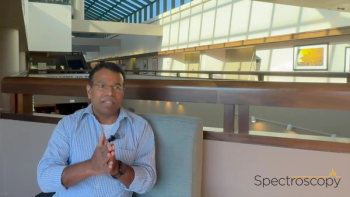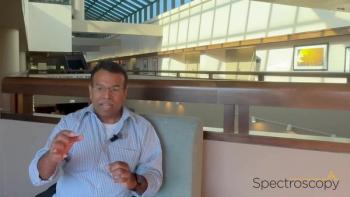
Watching Electrons Move at High Speed
New techniques developed by a team of researchers at Massachusetts Institute of Technology (MIT) (Cambridge, Massachusetts) could help unlock the mysteries of exactly how electrons move and react in topological insulators–materials that hold promise for new kinds of electronic devices.
New techniques developed by a team of researchers at Massachusetts Institute of Technology (MIT) (Cambridge, Massachusetts) could help unlock the mysteries of exactly how electrons move and react in topological insulators–materials that hold promise for new kinds of electronic devices. The information could open up new possibilities for harnessing these electrons.
The MIT team has managed, for the first time, to create three-dimensional “movies” of electron behavior in a topological insulator, or TI. The movies can capture vanishingly small increments of time–down to the level of a few femtoseconds, or millionths of a billionth of a second–so that they can catch the motions of electrons as they scatter in response to a very short pulse of light. When moving along the surface of Tis, electrons move as if they were massless, like light.
The dramatic new results are published in the journal Physical Review Letters, in a paper by MIT graduate student Yihua Wang, assistant professor of physics Nuh Gedik and six other researchers.
Tis are a class of materials with seemingly contradictory characteristics: The bulk of the material acts as an insulator, almost completely blocking any flow of electrons. But the surface of the material behaves as a very good conductor, like metal, allowing electrons to travel freely. The surface is even more conductive than normal metals, allowing electrons to travel at almost the speed of light and to be unaffected by impurities in the material, which normally hinder their motion.
Because of these characteristics, Tis are seen as a promising new material for electronic circuits and data storage devices. But developing such new devices requires a better understanding of exactly how electrons move around on and inside the TI, and how the surface electrons interact with those inside the material.
Last year, Gedik, Wang, and others published a paper describing a new technique that allowed them to create instantaneous three-dimensional still images of the energy, momentum, and spin of electrons within topological insulators. The new technique, which enables moving 3-D images, is an application of a method called the “pump-probe technique.” It uses a short pulse of laser light to energize the material, causing electrons to scatter, and a second, slightly delayed pulse to illuminate it and produce an image. “The first pulse does something to the electrons, and the second pulse captures what happened,” Gedik explains.
Then the process is repeated, with the second laser pulse delayed by ever-increasing increments of just a few femtoseconds. Each resulting image shows the response of the electrons to the beam after a corresponding interval. These images can then be assembled into a movie that shows how the response changes with time.
By using the new technique, the researchers have already discovered interactions between a TI’s surface and bulk electrons that had never been seen before, demonstrating the power of their method to reveal new details of how TIs work. “With this 3-D movie, in real time we can visualize how one population of electrons (those on the surface) scatters into the other population (inside the material),” Gedik says. “This is very important to understand.”
What Gedik and his colleagues found was that the interaction between the two is mediated by sound waves, and that this interaction happens at high temperatures.
Hundreds of potential applications for the TI materials have already been proposed, Gedik says, including new kinds of magnetic storage devices to replace today’s hard disks.
The research was supported by the U.S. Department of Energy’s Office of Basic Energy Sciences, the Army Research Office, and the National Science Foundation.
Related information:
The Future of Light-Based Technologies: Making Images at the Speed of Light
Today, the capabilities of modern technologies are constantly increasing, and instruments are becoming smaller, faster, cheaper, more portable, and more easily interconnected. This is true for many analytical spectroscopy techniques as well as for a wide range of other technologies that have the potential to intersect with the field of spectroscopy and expand its boundaries. To explore these developments, Spectroscopy is launching an article series about new technologies and new applications of existing technologies that are based on or related to light. We kick off the series with this interview with Andreas Veltenabout his work as a postdoctoral associate at the Massachusetts Institute of Technology (MIT) Media Lab in Cambridge, Massachusetts. (Velten has since taken a position as associate scientist at the Morgridge Institute for Research at the University of Wisconsin in Madison).
http://www.spectroscopyonline.com/spectroscopy/Articles/The-Future-of-Light-Based-Technologies/ArticleStandard/Article/detail/781493?topic=131
Newsletter
Get essential updates on the latest spectroscopy technologies, regulatory standards, and best practices—subscribe today to Spectroscopy.





